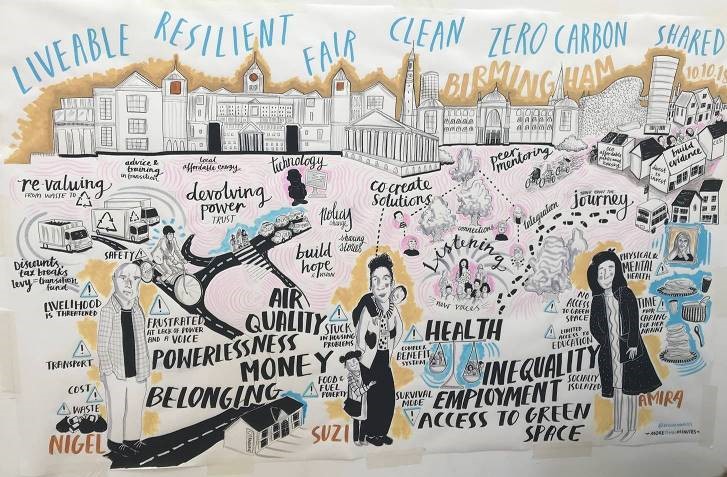What is a co-benefit?
A co-benefit is an additional or extra benefit we receive when addressing a given issue or concern. Considering co-benefits allows several objectives to be met simultaneously – also known as ‘multi-solving’ – beyond just the main/primary issue. An example might be an initiative to increase cycling in a particular community, with a primary objective of reducing carbon emissions locally. However, this initiative will also deliver the co-benefit of improved health (physical and mental) for residents via increased physical activity and improved air quality. Over time, this will result in fewer NHS interventions, saving money.
Why take a co-benefits approach?
A co-benefits approach has several advantages:
- It makes for a stronger business case, because several issues can be tackled at once.
- It generates more buy-in, both from decision-makers and from project beneficiaries.
- It offers potential to unlock additional funding from decision-makers that gain from the co-benefits.
A co-benefits approach is particularly useful for climate change projects. The narrative surrounding climate action often emphasises giving things up (e.g. flying or driving). Instead, emphasising co-benefits demonstrates that climate action can improve lives rather than diminish them.
Co-benefits: A scenario
A local government housing department contributes £10m for a project that aims to deliver carbon dioxide savings via an energy efficiency scheme.
If a straightforward, non co-benefits approach is taken, all the focus, administrative responsibility and budget for this project lies with the housing department. The only goal is to hit the target of reducing carbon through energy efficiency.
A co-benefits approach would consider how other benefits, such as health, can be achieved alongside these carbon savings. This could shift the focus of the project – for instance, to prioritise reaching those who cannot afford to heat or fuel their homes to an adequate level, which is detrimental to their overall health and wellbeing.
Incorporating a fuel poverty angle could encourage other departments or external partners to contribute to the cost of the project due to the benefits and savings it will offer them. As well as budget savings, this enables valuable partnerships within and outside the local authority to flourish. Expertise in delivering a combined outcome of reducing carbon and improving outcomes for those living in fuel poverty is built – and can be leveraged for future projects.
How to implement a co-benefits approach
The approach taken will differ between projects, but will typically involve the following steps:
- Explore the potential co-benefits of the project. Areas to consider are health, employment and skills, stronger communities, and resilience to economic shocks and/or climate change.
- Identify potential partners who could help deliver those co-benefits. This may be the public health team, a job centre, small business, local college or school. Who are the other organisations or departments who would or could benefit from the co-benefits identified?
- Consider how the project design could be developed and optimised to deliver those co-benefits. What can be done to facilitate the intended outcomes and objectives? What can be done to build trust and engagement? For instance, a plan to introduce new cycle lanes could be paired with cycle training in communities with low uptake.
- Explore if there is additional funding that a co-benefits approach could unlock. Look at the partnerships established, and the opportunities for funding linked to co-benefit areas.
- Assess, with partners, how the co-benefits delivered can be measured.
- Think about how your organisation should be structured to ensure that climate action is at the heart of everything it does.
Identifying co-benefits
When identifying potential co-benefits, it is useful to think about the people a project is aiming to help and the unique issues they may be facing. This film is a useful resource for understanding the different, multiple and often interlinked challenges faced within our communities. A multi-solving perspective like this considers the bigger picture.
Quantifying co-benefits
Relevant resources and guidance on how to quantify co-benefits can be found at the end of each chapter of this toolkit.

Next Section:
1.4 Enabling a just transition

